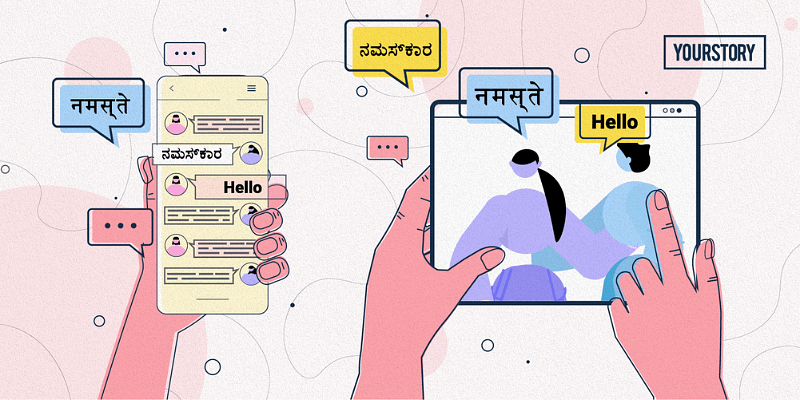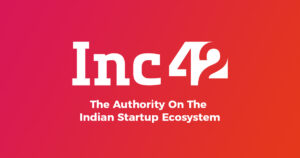Our lives today are defined by digital economy. From scrolling through websites each morning to gather world news, to ordering in breakfast through an app, commuting to work through ride-sharing apps, to shopping and settling bills online – ‘digital’ has upended our lives on a day-to-day basis.
No sector is immune to technology’s overarching impact. But as digital native companies and platform businesses drive growth, they do so by harnessing the language potential, and by offering their features across a whole host of native Indian languages to enable people across India to understand and utilise them.
Consider this – in a diverse land with 22 official languages and 6,000 dialects, over 90 percent of Indians think and speak in a native language. This mandates platform businesses to innovate and provide their offerings in Indian languages, if they are to sustain, scale and thrive in a market where the number of internet users will cross a colossal 900 million soon.
Even as multi-lingualism gathers prominence in the world of platform enterprises and designs the digital lives of Indians, there still exists a largely untapped space of self-expression where aspirational Indians are hesitant to venture into – thanks to the English-centric philosophies of global giants.
A need to express
The very foundation of internet products revolves around the fundamental use cases of information, communication, connection, and expression. Expression is a powerful element on the internet today.
Expression is also inherent in each of us. We all feel the need to share thoughts and have our expression reach a wider audience of relevance.
We desire to engage with individuals from similar cultural and linguistic backgrounds, form fruitful connections, and discuss a variety of topics – be it sports, politics, art & culture, festivals, literature, or civic affairs. And this expression happens best when we are empowered to do so in our mother tongue. To express in one’s mother tongue without English translations is the most liberating experience for anyone.
But for most existing social media brands, English is the core focus, with native languages being an after-thought. Geographically too, the focus for global giants centers largely around English-speaking urban India. This leaves out over a billion Indians – nearly 90 percent of a 1.3 billion population based in semi-rural areas, as well as in metros that are not fluent in English.
These individuals are internet-savvy, they rely on platform businesses in their everyday lives by using a ride-hailing app to work or ordering groceries online. But when it comes to micro-blogging, they remain cautious – thanks to the English dominance of global products whose features and users are both incompatible with native languages.
In addition to leaving out native speakers from the sphere of micro-blogging, the English-first approach of global social products also prevents brands in sectors like retail, edutech, healthtech, fintech, etc. from engaging meaningfully with a vast consumer base and strengthening brand loyalty.
These days, brands are crafting localised messaging in vernacular languages to enhance their outreach amongst masses in an internet-driven world – where every town, taluka or village is driving key decisions from products to politics.
Nine out of every 10 new internet users are native language speakers, and hence the need for brands to connect with users in regional languages carries significant value. But this again is done best on platforms that enable dialogue and translations across a multitude of Indian languages.
Dialogue and Translations
Language can no longer be a barrier in a transformative world. As much as expression in a native language between creators and users holds the key to a digitally connected world, the need for real-time translation is also imperative.
To promote digital inclusion, an immersive language experience is the need of the hour. Allowing users to express themselves in their mother tongue is one aspect of digital empowerment. The second aspect lies in enabling dialogue between users who speak two different native languages.
Let’s elucidate this with an example. A native Kannada and Bengali speaker are both sharing thoughts on say – cricket. Now how does a system connect these two people and enable them to engage in a dialogue in their respective languages?
Here’s where innovative language processing technologies come into effect by permitting real-time translation – translation that retains the sentiment affixed to the original content and comprehends nuances attached to each language to deliver an optimal output.
When platforms are architected in such a manner, user A puts out content in his language, while user B consumes it in his language – thus, both the creator and consumer of content engage seamlessly on a common area of interest in their respective languages. This induces gratification and encourages users to explore and engage more on platforms.
Going forward, regional languages will be the catalyst, for digitising the ‘un-digitised’ population, for democratising the voice of billions, and for building a sticky user network on innovative platforms.
(Disclaimer: The views and opinions expressed in this article are those of the author and do not necessarily reflect the views of YS.)










